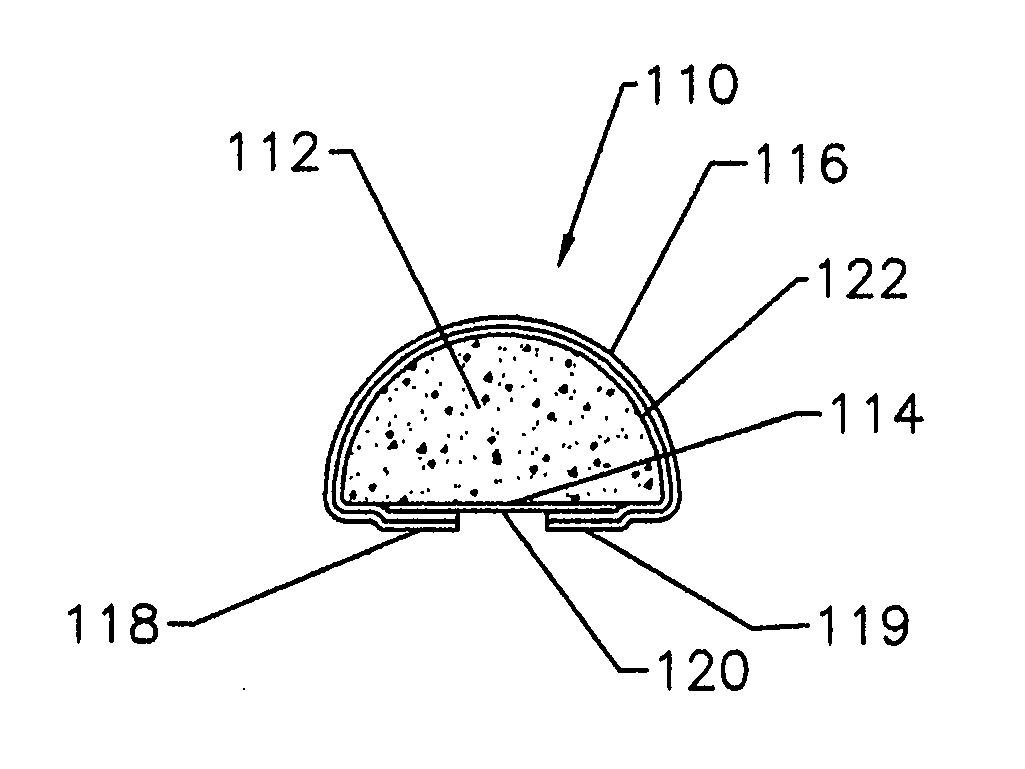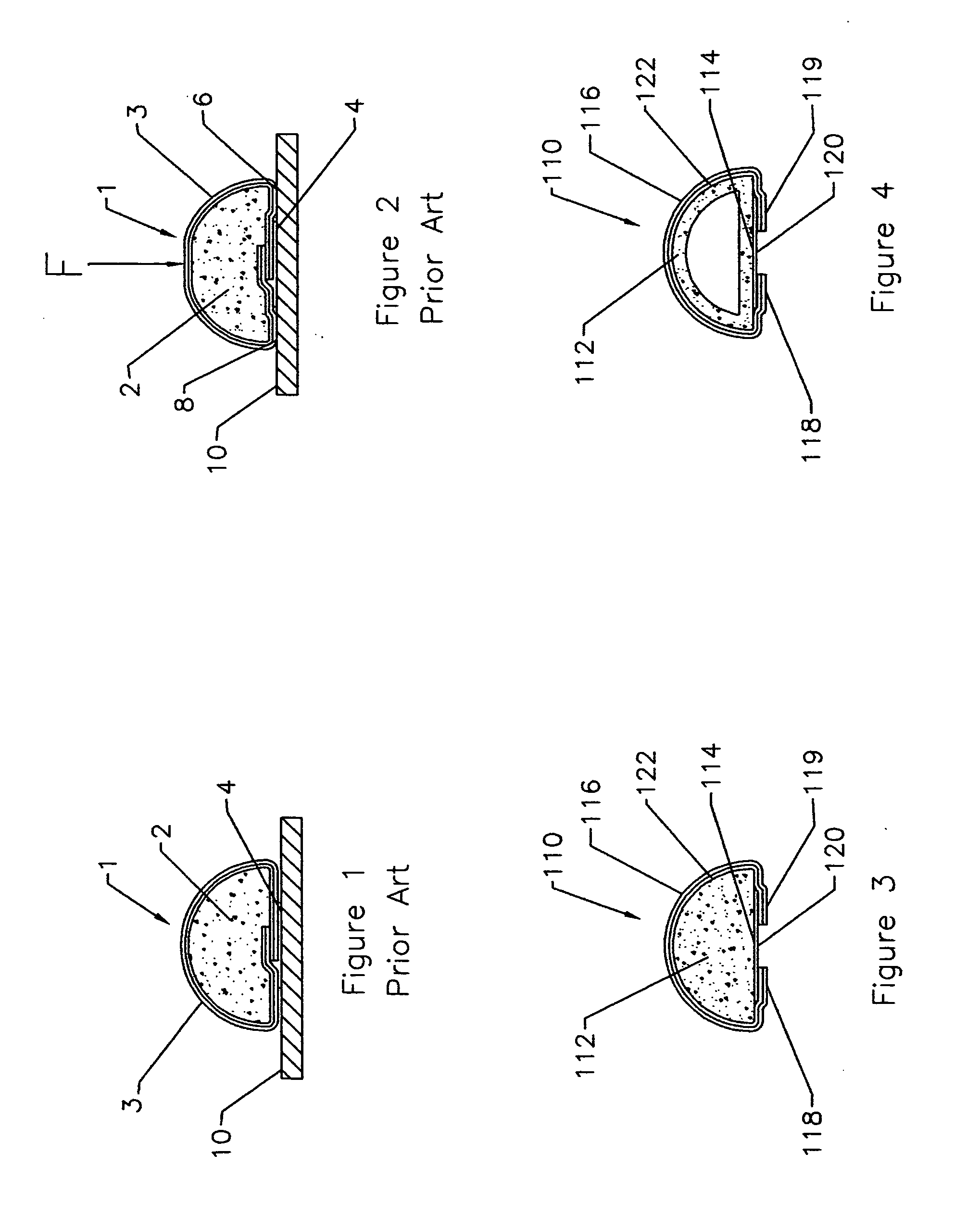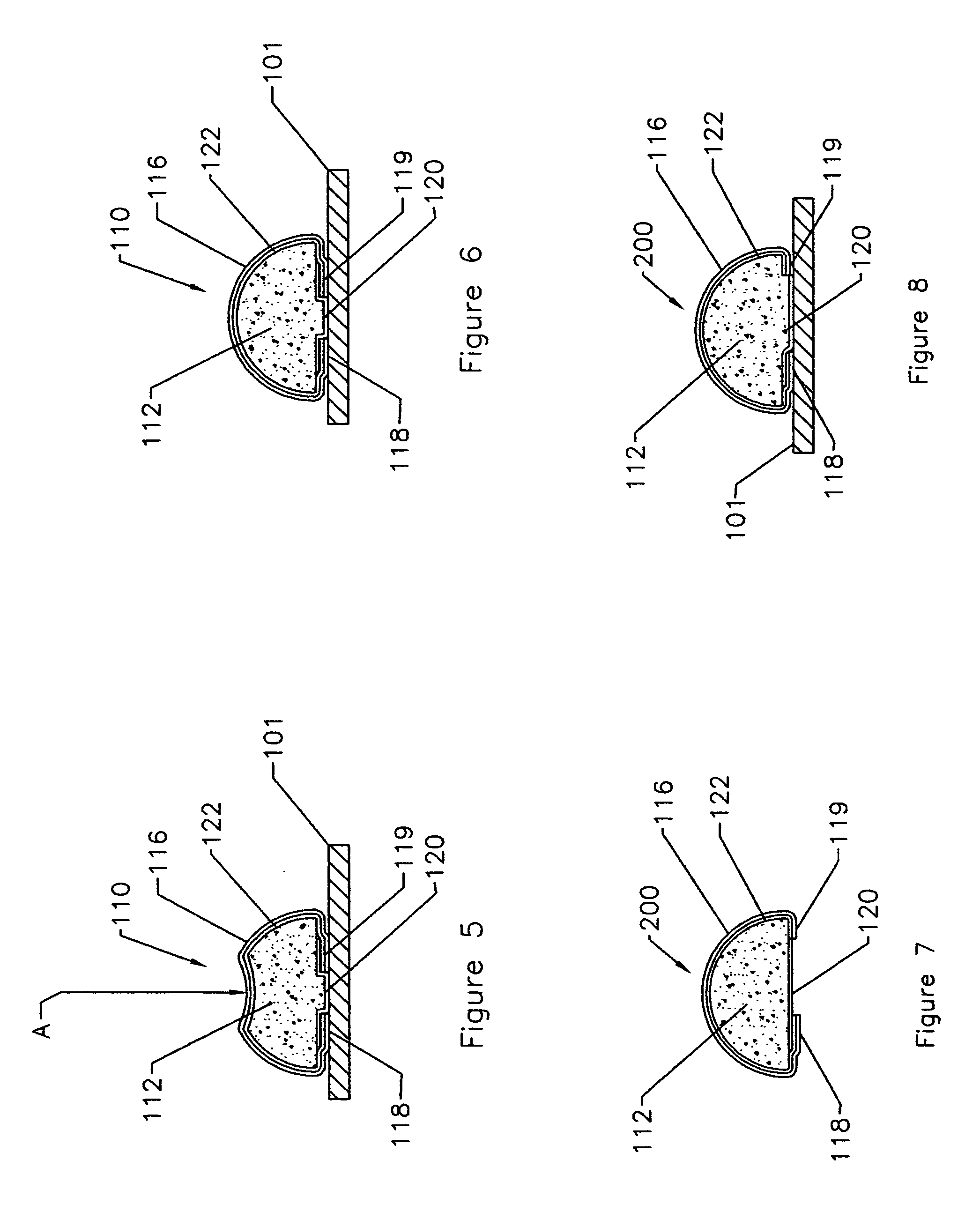Electrically conductive gasket
a gasket and electrically conductive technology, applied in the field of gaskets, can solve the problems of electromagnetic interference (emi), the list of electrical components seems endless and continues to grow, and the need to solve additional problems
- Summary
- Abstract
- Description
- Claims
- Application Information
AI Technical Summary
Benefits of technology
Problems solved by technology
Method used
Image
Examples
Embodiment Construction
[0052] Referring now to the drawings for the purposes of illustrating embodiments of the invention only and not for the purposes of limiting the same, FIGS. 3-6 illustrate a gasket assembly 110 comprising one embodiment of the present invention which may be attached to an electrically conductive object 101 such as a portion of a housing used to house electrical components. As the present Detailed Description proceeds, the reader will appreciate that the various embodiments of the present invention may be effectively employed for example, to seal the interface between an enclosure and a door or panel, but various embodiments may also find use in other applications such as providing electrical continuity between two adjoining panels, such as walls in a shielded room, or providing a conductive environmental seal between two adjoining equipment sections. Thus, as used herein, the term “electrically conductive object” can refer to any object that may conduct electricity.
[0053] In this e...
PUM
 Login to View More
Login to View More Abstract
Description
Claims
Application Information
 Login to View More
Login to View More - R&D
- Intellectual Property
- Life Sciences
- Materials
- Tech Scout
- Unparalleled Data Quality
- Higher Quality Content
- 60% Fewer Hallucinations
Browse by: Latest US Patents, China's latest patents, Technical Efficacy Thesaurus, Application Domain, Technology Topic, Popular Technical Reports.
© 2025 PatSnap. All rights reserved.Legal|Privacy policy|Modern Slavery Act Transparency Statement|Sitemap|About US| Contact US: help@patsnap.com



